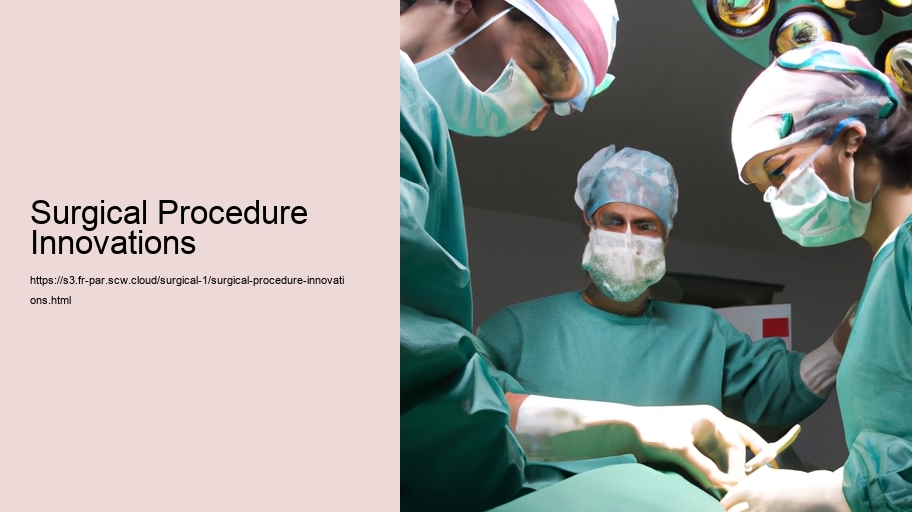Surgical Procedure Innovations: Paving the Path to Enhanced Patient Care
In the ever-evolving landscape of modern medicine, surgical procedure innovations stand out as beacons of progress, illuminating the path to safer, more effective, and less invasive treatments. The relentless pursuit of better outcomes and patient experiences has driven the surgical field forward, leading to a myriad of technological breakthroughs and novel techniques that have revolutionized the way surgeons operate.
At the heart of surgical innovation lies the fundamental desire to reduce the trauma and risk associated with surgical interventions. This has led to the advent of minimally invasive surgery (MIS), which, through the use of specialized instruments and advanced imaging techniques, allows surgeons to perform complex procedures through tiny incisions. The benefits of MIS are manifold, including reduced pain and scarring, shorter hospital stays, and faster recovery times. Laparoscopic surgery, for example, has become a staple in many operating rooms, offering patients a less daunting path through surgeries that once required large, open incisions.
Another groundbreaking development has been the rise of robotic surgery, epitomized by systems like the da Vinci Surgical System. These sophisticated machines extend the capabilities of human hands, providing unparalleled precision and control. Surgeons can perform delicate procedures with robotic arms that eliminate tremors and offer a greater range of motion than the human wrist. This technology has not only enhanced the surgeon's skill but has also opened the door to new possibilities in surgical care that were once thought impossible.
Surgical innovation is not limited to the physical tools and techniques; it also encompasses the materials used in surgery. The development of bio-compatible and bio-absorbable materials has led to sutures, stents, and implants that integrate with the body more naturally, reducing the risk of rejection and infection. Smart materials that can respond to the body's environment, such as shape-memory alloys and hydrogels that promote tissue growth, are paving the way for the next generation of surgical implants that work in harmony with the body's own processes.
The integration of advanced imaging and diagnostic tools into surgical procedures has also been a game-changer. Intraoperative imaging technologies, such as real-time MRI and 3D ultrasound, allow surgeons to see beyond the surface, giving them a detailed view of the surgical site and enabling more precise navigation around critical structures. This has been particularly transformative in the fields of neurosurgery and orthopedic surgery, where millimeter-level accuracy can mean the difference between success and failure.
Furthermore, the field of regenerative medicine holds great promise for the future of surgery. Techniques like tissue engineering, stem cell therapy, and organ printing are at the forefront of research, aiming to repair or replace damaged tissues and organs. The potential to heal wounds without scarring, regenerate nerve connections, or even grow new organs in the lab could drastically reduce the need for traditional surgical interventions.
But innovation in surgery is not just about the high-tech advancements; it also involves rethinking existing procedures and protocols. Enhanced recovery after surgery (ERAS) protocols are one such example, focusing on optimizing patient care before, during, and after surgery to speed up recovery and improve outcomes. These protocols involve a multidisciplinary approach that includes nutrition, pain management, and early mobilization, challenging the traditional models of surgical care.
In conclusion, the field of surgical procedure innovations is a testament to the relentless drive towards better patient care. From the precision of robotic arms to the promise of regenerative therapies, these advancements embody the spirit of scientific inquiry and compassion for human suffering. As technology continues to advance and our understanding of the human body deepens, the horizon of surgical possibilities will only expand, bringing hope and healing to countless individuals around the world. With each innovation, surgeons are gifted with new tools to fight disease and injury, reinforcing the noble mission of medicine: to cure sometimes, to relieve often, and to comfort always.
